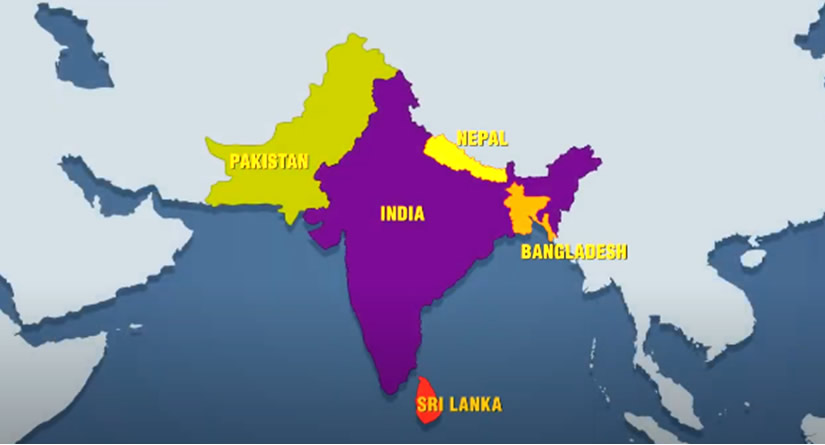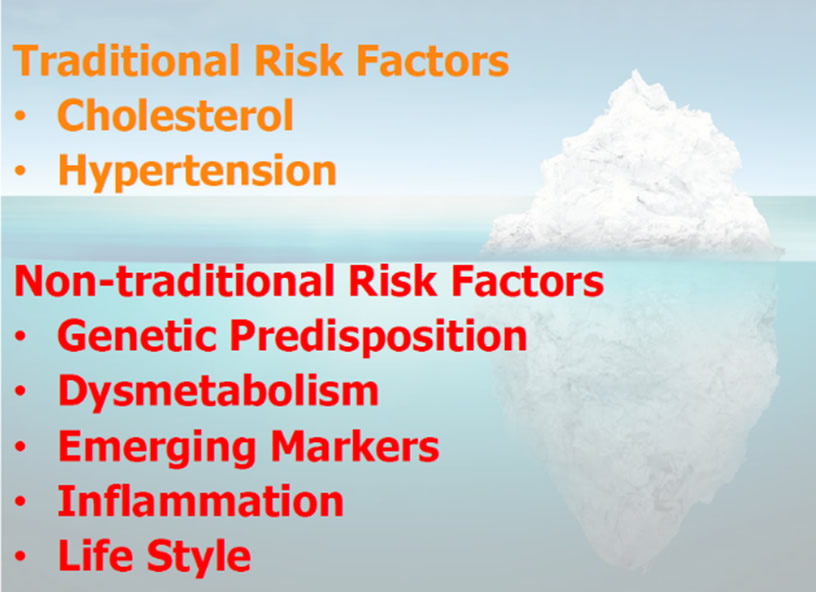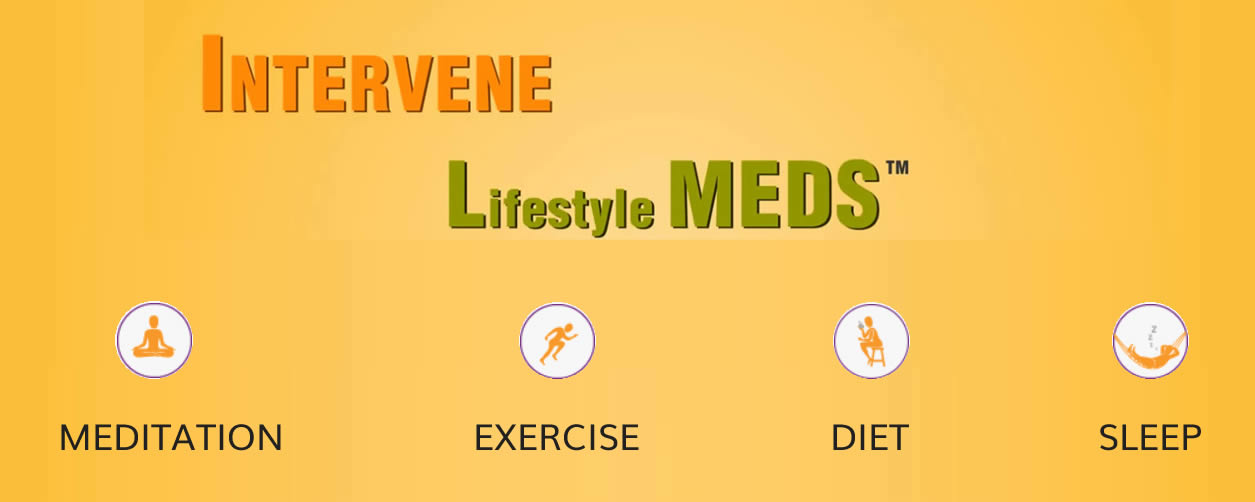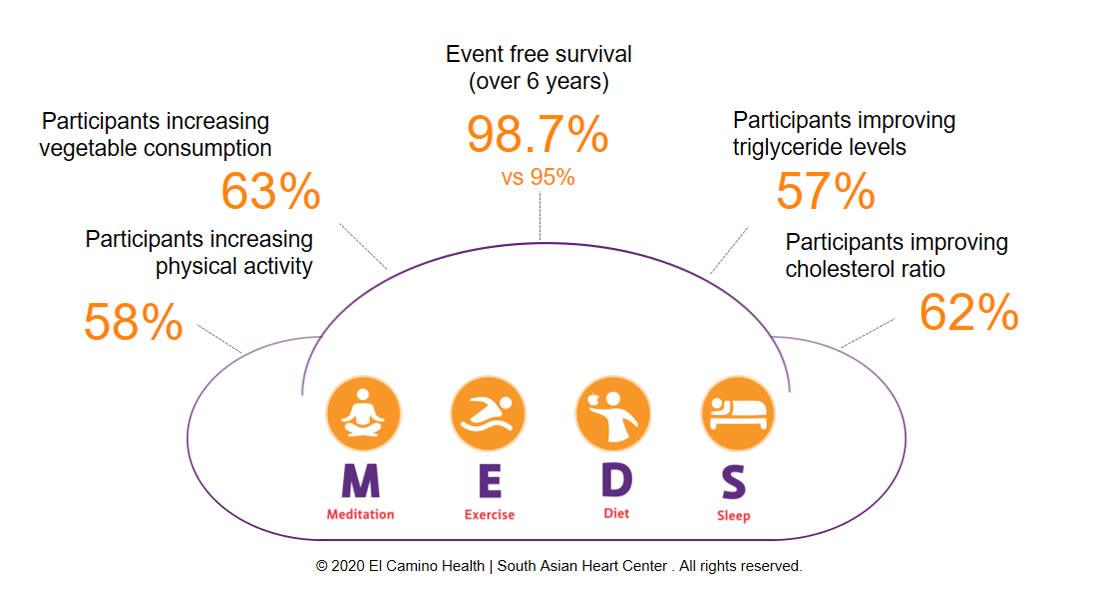South Asians make up less than 20% of the world population but makeup 60% of the people suffering from heart disease worldwide. And this is independent of where they live in the world. Similarly, South Asians make up a far larger share (over 25%) of the people in the world that are afflicted with diabetes. What’s worse is South Asians have heart attacks at much younger ages, despite being mostly vegetarian, nonsmoking and non-obese.
A transformative new initiative to
mitigate the high risk of heart disease and diabetes
for South Asians from the Indian subcontinent
South Asians make up less than 20% of the world population but makeup 60% of the people suffering from heart disease worldwide. And this is independent of where they live in the world. Similarly, South Asians make up a far larger share (over 25%) of the people in the world that are afflicted with diabetes. What’s worse is South Asians have heart attacks at much younger ages, despite being mostly vegetarian, nonsmoking and non-obese.


Traditional screening processes are not sufficient


Traditional markers, just like the tip of the iceberg, reveal only part of the story. Elevated LDL cholesterol, for instance, explains just 25% of premature coronary artery disease. The real danger, or risk of heart attacks and diabetes, lies beneath the surface.
Several risk factors and biomarkers that are more effective at detecting disease (better predict risk) are hidden in traditional assessments. They can only be revealed by advanced screening protocols, such as those incorporated in the comprehensive AIM to Prevent™ program now offered by ICC in partnership with South Asian Heart Center (part of El Camino Hospital CA).
AIM to Prevent™ program


ICC as a consortium partner of South Asian Heart Center is offering a proven program with documented results to South Asians in New England area. South Asian Heart Center has been offering this program for the past 12 years and the evidence they have collected makes it clear that besides medical care, these risks and conditions can be improved by Lifestyle changes. To be effective these programs need to be culturally tailored, evidence-based and sustainable. To read more about various studies on the impact of lifestyle habits that impact outcomes visit https://www.southasianheartcenter.org/lifestyle page.
This new and transformative initiative at ICC provides an opportunity for participants to learn about various aspects of Lifestyle changes to reduce their own risks. This is a culturally tailored, evidence-based proven program at South Asian Heart Center (the Center) at El Camino Health, California. Working in collaboration with the Center, ICC plans to build a team, capacity to serve and replicate the proven program to serve our community.
AIM stands for Assess, Intervene and Manage. In the Assess phase, advanced screening methods are used to uncover hidden risk factors for heart disease and diabetes. The Intervene phase of the AIM to Prevent™ program provides expert counseling focused on personalized lifestyle changes. We know that lifestyle changes are easier said than done. That is the reason why, in the Manage phase of AIM to Prevent™, the Center has trained heart health coaches to help participants make and sustain lifestyle habits. All aspects of the AIM to Prevent™ program, from advanced screening to lifestyle coaching are evidence-based.
Benefits
Impact of AIM to Prevent Program in
Reducing Risk through Lifestyle changes
4,365 participants followed over 12 years (2006-2019)
2,285 retested in the same period


Participant Testimonials
Physician spotlight
Resources for you and your Physician
Take advantage of the following physician and patient-centric practice materials:
- Presentation: Physicians CME: Ancient is the New New
- Handout: Hidden Risks Iceberg
- Form: Patient Referral Slip
- Research: South Asian Heart Center Manuscripts & Poster Presentations
- Reference: South Asian Heart Center’s AIM to Prevent & Lifestyle MEDS: the evidence
- Brochure: Patient Resource: What have you done to avoid a heart attack or diabetes?
Frequently Asked Questions
Frequently Asked Questions - Customer
The South Asian Heart Center was created by El Camino Health in 2006, as an independent non-profit, to expressly meet the unique and unmet needs of the South Asian community. Its mission is to reduce the high incidence of coronary artery disease (CAD) and diabetes mellitus (DM) by providing culturally tailored, lifestyle-focused, and evidence-based risk reduction techniques and tools to South Asians and their physicians. The Center raises awareness, prevents disease through screening, counseling, and coaching participants, educates and partners with physicians, and collaborates on research to address these health disparities.
El Camino Health is committed to community health issues. In the mid 2000s, it found that South Asians were just 3% of the population base it served, yet, they constituted a much larger portion (5-6%) of admissions to the Emergency Room with acute myocardial infarctions. This was a matter of community health, and true to its mission, El Camino Health generously supported a group of South Asian physicians and philanthropists start an initiative aimed at addressing chronic diseases unique to South Asians. The South Asian Heart Center has already served as a model for the design of tailored solutions to healthcare issues for other ethnic minorities.
South Asians are people who trace their ancestry to the countries in the Indian subcontinent; mostly India, Pakistan, Bangladesh, Sri Lanka, and Nepal.
The South Asian Heart Center operates in El Camino Health at its Mountain View and Los Gatos campuses, and from an office in Fremont, CA. Most of the services provided by the Center are provided using telehealth and virtual conferencing.
- Mountain View Location:
El Camino Health, Melchor Pavilion, 3rd Floor
2490 Hospital Drive, Suite 302
Mountain View, CA-94040
Phone: 650-940-7242
- Los Gatos Location:
El Camino Health, 777 Knowles Drive, Suite 17A
Los Gatos, CA-95032
- Fremont Location:
El Camino Health, 2147 Mowry Avenue, Suite B1
Fremont, CA 94538
Coronary Artery Disease (CAD) and Diabetes Mellitus (DM) are global epidemics among people of South Asian descent. These chronic diseases strike South Asians at a younger age, and more severely than the general population. This, despite many being lifelong vegetarians who do not smoke and are not overweight.
Coronary artery disease (CAD) also known as atherosclerotic heart disease, atherosclerotic cardiovascular disease, coronary heart disease, or ischemic heart disease (IHD), is the most common type of heart disease and cause of heart attacks. The disease is caused by plaque building up along the inner walls of the arteries surrounding the heart, narrowing them and reducing the blood flow to the heart.
Diabetes mellitus (DM), also simply known as diabetes, is a group of metabolic diseases that result in high blood sugar levels over a prolonged period. This high blood sugar produces the symptoms of frequent urination, increased thirst, and increased hunger. Untreated, diabetes can cause many complications. Serious long-term complications include heart disease, stroke, kidney failure, foot ulcers and damage to the eyes. Diabetes is due to either the pancreas not producing enough insulin, or the cells of the body not responding properly to the insulin produced.
- Type 1 DM results from the body’s failure to produce enough insulin.
- Type 2 DM begins with insulin resistance, a condition in which cells fail to respond to insulin properly. As the disease progresses a lack of insulin may also develop.
- Gestational diabetes occurs when pregnant women without a previous history of diabetes develop a high blood glucose level.
Indians bear 60% of the world’s heart disease burden despite being only 17% of the world’s population. Indians and other South Asians experience heart disease at rates at least two times higher, and diabetes at four times higher rates than any other nationality or ethnic group. Globally, 10-12% of the South Asian population in urban areas and 4-6% in rural areas is afflicted with heart disease.
CAD is not just a disease for South Asian men. South Asian women also have one of the highest mortality rates due to CAD. Findings from the 1990-2000 California Census data showed that all ethnic minority women, except South Asian women, were living longer.
Traditional risk factors fail to fully explain the increased and early presentation of heart attacks in South Asians. South Asians don’t have a higher incidence of obesity or high blood pressure. They don’t usually smoke. Nearly half are lifelong vegetarians. But there are some genetic and lifestyle-related risk factors that come into play. Indians suffer from diabetes and poor cholesterol ratios at a younger age. Their laboratory results often demonstrate higher levels of emerging risk factors such as: elevated apolipoprotein B (ApoB), reduced large protective high-density lipoprotein (HDL) particles, higher Lipoprotein(a), inflammatory markers and insulin and glucose abnormalities. The traditional Indian or desi diet is deficient in vegetables and high in simple carbohydrates, added sugars, salt, and saturated fats. Modern life tends to be high-stress, and many South Asians don’t make time for regular exercise, adequate rest, and stress reduction. Genetics set the stage for heart disease in Indians, but it is lifestyle that brings the curtain down on far too many people, far too young.
Chest discomfort or pain: This discomfort or pain can feel like a tight ache, pressure, fullness or squeezing in your chest lasting more than a few minutes. This discomfort may come and go.
Upper body pain: Pain or discomfort may spread beyond your chest to your shoulders, arms, back, neck, teeth or jaw. You may have upper body pain with no chest discomfort.
Stomach pain: Pain may extend downward into your abdominal area and may feel like heartburn.
Shortness of breath: You may pant for breath or try to take in deep breaths. This often occurs before you develop chest discomfort, or you may not experience any chest discomfort.
Anxiety: You may feel a sense of doom or feel as if you’re having a panic attack for no apparent reason.
Lightheadedness: In addition to chest pressure, you may feel dizzy or feel like you might pass out.
Sweating: You may suddenly break into a sweat with cold, clammy skin.
Nausea and vomiting: You may feel sick to your stomach or vomit.
Most heart attacks begin with subtle symptoms — with only discomfort that often is not described as pain. The chest discomfort may come and go. Don’t be tempted to downplay your symptoms or brush them off as indigestion or anxiety.
Women may have all, none, many, or a few of the typical heart attack symptoms. While some type of pain, pressure or discomfort in the chest is still a common symptom of a heart attack in women, many women have heart attack symptoms without chest pain, such as:
- Pain in the back, shoulders or jaw
- Shortness of breath
- Abdominal pain or “heartburn”
- Nausea or vomiting
- Fainting
- Unusual or unexplained fatigue, possibly for days
The elderly and those with diabetes may have no or very mild symptoms of a heart attack, so it’s especially important not to dismiss heart attack symptoms in people with diabetes and older adults even if they don’t seem serious.
Quick action can save your life: Call 9–1–1.
Heart attack symptoms vary widely. For instance, you may have only minor chest discomfort while someone else has excruciating pain. The signs and symptoms of a heart attack can develop suddenly. However, they also can develop slowly—sometimes within hours, days, or weeks of a heart attack.
Any time you think you might be having heart attack symptoms or a heart attack, don’t ignore it or feel embarrassed to call for help. Call 9–1–1 for emergency medical care, even if you are not sure whether you’re having a heart attack. Here is why:
- Acting fast can save your life.
- An ambulance is the best and safest way to get to the hospital. Emergency medical services (EMS) personnel can check how you are doing and start life-saving medicines and other treatments right away. People who arrive by ambulance often receive faster treatment at the hospital.
- The 9–1–1 operator or EMS technician can give you advice. You might be told to crush or chew an aspirin if you’re not allergic, unless there is a medical reason for you not to take one. Aspirin taken during a heart attack can limit the damage to your heart and save your life.
Every minute matters. Never delay calling 9–1–1, or to take aspirin. Don’t “tough out” heart attack symptoms for more than five minutes. Call 911 or other emergency medical services for help. If you don’t have access to emergency medical services, have someone drive you to the nearest hospital. Drive yourself only as a last resort if there are absolutely no other options.
You may be at risk for a heart attack despite showing no recognizable symptoms. When symptoms appear, it may already be too late. Screening is the first step in preventing chronic disease. Screening also identifies potential risk, not typically detected at an annual physical.
Being young is not cardio protective enough for South Asians, as is demonstrated in several studies in global urban and rural South Asian populations. 25% of heart attacks occur in those younger than 40 years, and 50% in those less than 55 years. By comparison, the typical age for the first heart attack in the general population is 65 years for men, and 70 years for women. Early detection is critical to prevention. The Center starts screening South Asians from the age of 18.
Being pre-menopausal is not sufficiently cardio-protective for South Asian women who have one of the highest mortality rates due to CAD. Findings from the 1990-2000 California Census data showed that all ethnic minority women other than those of South Asian descent, were living longer. Since prevention is better than cure, young South Asian women should identify their risks by signing up for comprehensive screening. Also, as their family’s health officers, women should be leaders and embrace prevention; the rest of their family is bound to follow and benefit from adopting healthier lifestyles.
Maybe so. But ignorance is not bliss, and you should do it for the sake of your children. Knowing your risk factors and managing them with lifestyle and other interventions could result in better quality of life and longevity.
AIM to Prevent is a specialized program for a special population. This unique program is an evidence-based, culturally tailored, lifestyle-focused program designed to prevent heart disease and diabetes in South Asians. The program comprises of three phase – Assess, Intervene, and Manage.
All phases of the AIM to Prevent program are uniquely focused on disease prevention in South Asians. Unlike typical tests done at the doctor’s office, comprehensive screening includes measurement of emerging, genetic, metabolic, inflammatory, and lifestyle disorders, as well as traditional markers. Expert counseling is focused entirely on proven lifestyle interventions. Finally, the program offers ongoing, personalized coaching, not typically available at doctors’ offices. AIM to Prevent is a high value program, delivered affordably, to a vulnerable population.
It has been shown through research conducted at the Center that compared to routine care, AIM to Prevent provides a statistically significant reduction in risk, across all traditional markers. Participants who have retested with the Center have seen improvement in risk factors such as cholesterol ratio and triglycerides. They have also improved lifestyle behaviors with increased vegetable consumption and physical activity.
If you are a South Asian man or woman over 18 years of age, you can sign up online. This program is currently available to South Asians residing in the United States. Once you sign up, the Center will follow up with you to schedule your appointments.
AIM to Prevent was designed to provide a high value but affordable program for all South Asians to utilize and derive benefit. The out-of-pocket cost for the full year of the program is $249 and includes three assessments, four workshops, and 12 monthly health coaching sessions.
Since the comprehensive tests are typically not part of the standard guidelines, your insurance might not cover the costs for these tests and may result in out-of-pocket costs. The program processing fee is payable at the time of enrollment. This processing fee, applicable nationwide, is irrespective of insurance coverage, and whether you choose to perform the AIM to Prevent laboratory tests separately at your physician’s office instead.
The processing fee is an out-of-pocket expense and is not reimbursed by insurance, so the question of being in or out of network does not apply.
The test results from your annual physical contain the evaluation of the basic lipid panel, and may not include the additional markers that better predict your risk of heart disease and diabetes. If your physician is unable to complete all the tests, the Center will do so at an additional cost.
A typical annual physical includes tests for your overall health, one of which is the traditional lipid panel which may underestimate your risk. Most South Asians would benefit from a more comprehensive evaluation like the one recommended in South Asian Heart Center’s AIM to Prevent program, to assess and address specifically, their risk of heart disease and diabetes. Our program complements the medical management provided by your physician, with expert counseling and personalized coaching on therapeutic lifestyle changes that lead to reduction in risk. In fact, the three way partnership between you, your physician and the Center is a big win-win for you.
The AIM to Prevent comprehensive laboratory tests are typically not part of the standard guidelines but may be available on the laboratory tests offered by your physician group or affiliated lab. In addition, physicians bound by the managed care policies and guidelines of their medical group affiliation may not be able to order these tests. We typically request the laboratory tests through your physician and provide them the list of the laboratory tests in our comprehensive screening to order.
If you choose to get these tests done with your physician, you will need to share the results with us so we may proceed with the remainder of your AIM to Prevent program.
The goal of our specialized program is to help you lower your risk of heart attack through a full evaluation of your risk factors, followed by lifestyle interventions and coaching. This philosophy is based on evidence from studies that have shown the positive impact of modifying diet, increasing physical activity, quitting tobacco use, getting enough sleep and managing stress. A recent study demonstrated that after only four years of improving your regular routine, you can reduce the incidence of heart attack by 35% and enhance your longevity by 40%. Additionally, people who have elevated blood sugars and are at risk for diabetes can decrease their risk by 58 percent within 2.8 years by incorporating exercise and modest changes in their diet. A recent study of first-time heart attack patients found that dietary changes can reduce the rate of recurrence by up to 70 percent.
As a participant in the AIM to Prevent program, you can opt-in to work with a heart health coach. Your coach will guide you through the lifestyle changes recommended by our clinician for a whole year. Lifestyle changes are hard to make and maintain. The Centers’ coaches use their culturally sensitive training and motivational interviewing skills to monitor your progress and motivate and facilitate you to stay on track. Research has shown that heart health coaching makes a difference.
The AIM to Prevent program processing fee is FSA/HSA reimbursable. The cost associated with the comprehensive laboratory tests is not included in this processing fee but is typically covered by your insurance when you get these completed by your primary care provider. The Center will complete these laboratory tests for you for a small fee if you do not have a primary care provider, or your provider is unable to complete these tests for any reason.
If you are self-insured and are utilizing your insurance company to cover the comprehensive test, depending on your insurance company actuarial policies, your results may be factored in the renewal premium calculation. If you self-pay for your comprehensive tests, no insurance company is involved.
The Center may recommend a retest to determine and review if the lifestyle interventions (and medications, if so, prescribed by your physician) after the baseline test, have had any effect on your risk profile. For most at-risk participants, the Center recommends consulting with their physician, and based on their profile, repeat the test in 3, 6, or 12 months. After the first year, the Center recommends the normal retesting as directed, and at the physician’s office on a regular basis, and a comprehensive test once a year.
The epidemic of heart disease and diabetes in South Asians calls for a structured and more focused lifestyle-based intervention. Physicians refer their South Asian patients to the Center to benefit from the Center’s AIM to Prevent program’s lifestyle focus that is complementary to the medical management their patient receives from them. The synergistic partnership with the Center results in improved outcomes for their patients.
As a referring physician, you may download our Patient Referral form or refer your patients online using our online form. You may also ask your patient to sign up online for the Center’s AIM to Prevent program at www.southasianheartcenter.org.
No, that is not something we will do. We believe in a win-win-win partnership between your patient, you, and the Center. We share all your patient’s comprehensive screening results and the Center’s recommendations and our intervention plan with you. Moreover, the Center encourages your patient to set up an appointment with you to discuss our report, review our suggestions for medications as warranted, and seek prescriptions as well as further work-up as you feel necessary for ongoing disease management.
Some of the benefits include:
- Center’s CME courses – Opportunities for comprehensive training and education about better evaluation and intervention in South Asian patients
- Practice materials targeted towards at-risk patients
- Access to a patient-focused, lifestyle intervention and management program with expert counselors and trained coaches (a unique and complementary resource to address the challenging lifestyle change and management aspects of patient management)
- Improved patient outcomes
The South Asian Heart Center currently partners with the Palo Alto Medical Foundation, American Association of Physicians of Indian Origin and CAMSF (Cardiology Associates of Marin and San Francisco) medical groups in addition to hundreds of individual medical practitioners.
The Center welcomes physicians and researchers to collaborate on pertinent questions regarding the epidemic, better prediction and tracking methodologies, impact of lifestyle and other interventions on disease prevention and reversal, and longitudinal analysis on longevity, successful aging, and mortality. Please submit your research topic interests, specific research questions and aims, and your background and resume to research@southasianheartcenter.org. You will hear back, as appropriate.
The El Camino Healthcare District provides grants to cover 30-40% of the South Asian Heart Center’s budget on an annual basis. Program fees usually provide an additional 7-10%. The remainder is filled in by leadership donations and the annual Scarlet Night fundraising gala. El Camino Health provides office space and infrastructure as well as marketing and fundraising support.
A non-profit, the South Asian Heart Center will always rely on donor support to sustain its operations so we can maximize the number of South Asians we serve. We plan to increase the sustainability of donor support by encouraging past donors and new participants to contribute on a yearly basis through an e-newsletter, regular direct mail appeals, and telephone solicitations. We are also inaugurating a Pay it Forward program that honors our donors while reminding participants that their screenings were underwritten through the generosity of others, and asking them to reciprocate by making their own gift to ensure more people can benefit.
The South Asian Heart Center’s Advisory Council members are drawn from the South Asian community of philanthropists, business professionals, and community leaders.
